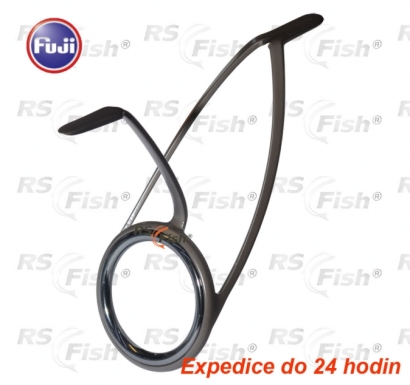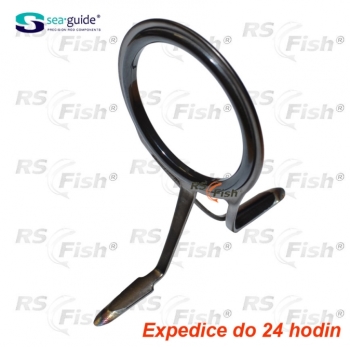Guide two leg Fuji SiC "K" Series KWSG
Silicon carbide or SiC is one of the most advanced ceramics that are available today. It is the hardest and most durable material in the menu Fuji and thanks to the guides SiC particularly well suited for the highest number of rods. When their production i... Full description Full description
Manufacturer: Fuji® Need help? +420604994440
Choose variant:
Similar products
Specifications
| Frame material | metal |
| Ring Material | silicon carbide |
Product description
Silicon carbide or SiC is one of the most advanced ceramics that are available today. It is the hardest and most durable material in the menu Fuji and thanks to the guides SiC particularly well suited for the highest number of rods. When their production is polished using diamond and therefore boast one of the smoothest rings. SiC rings were also the first ever that are mounted directly to the frame, which reduces weight and increases heat dissipation. We know that if guides are on the market a number of manufacturers and suppliers who issue their guides for the brand - made from premium materials. This is a real Japanese Fuji products that will not fail in any situation. Every guide Fuji SiC as a hallmark stamped logo on the arm of guide.

A : FUJI ring materials are the best in the business, with a wider selection of proprietary ceramic blends than any other manufacturer and a high polish finishing process that offers the lowest frictional coefficient on any given material regardless of price.
B : Most FUJI Guides feature a “Deep-Pressed Ring” design. Fuji invented the process to further protect the ring and provide a more secure hold. Deep-pressing was the answer. Not only did it protect the entire outside edge of the ring, it provided a full epoxy seal around the ring perimeter as well as more surface area contact. Today, many companies offer “locked” rings, but it was FUJI who invented, refined and prefected the original design until it was the strongest and most reliable available. Compared to Fuji, other companies are still in the "experimental" phase of locking or "deep pressed" rings.
C : Close examination of any Fuji guide frame will begin to reveal the details that separate Fuji Rod Components from all others. Stamping a no-weld frame, for example, is an invitation for “V” shaped “crotches” to form at junction points. Fuji pays special attention to eliminating these problem areas in two ways. First, all junctions are finished to create a radius in the bend rather than a sharp “V”. This eliminates possible line pinch and allows unrestricted line flow even when line escapes the ring. Second is the quality of Fuji’s polishing technique. Years of refinement have resulted in a polishing technique unmatched in the industry. Better polish results in a smoother, slicker surface which not only reduces line friction, but aids greatly in reducing the corrosion properties of the metal. In fact, polish on stainless is actually more important than grade, creating a stronger chromium oxide vapor barrier that resists corrosion.
D : FUJI Titanium Guide Frames are masterfully crafted to include a unique stamping that slightly “channels” the metal of the frame legs. This extra step makes FUJI Titanium Frames the strongest Titanium frame available. Similar to “I-beam” or “U-channel” steel, the final shape is far more resistant to bending than “flat” titanium would be. Combined with the ultra light weight of titanium this is truly the ultimate guide.
E : All Fuji guide frames are stamped from high grade stainless (or titanium) and are then passed through a series of “micro-bends” that slowly shape the guide into its final form. Fuji’s technique is a guarded secret because aggressive bending heats and softens stainless steel and results in a guide that is not as strong. Creating the first no-weld guide was a technological revolution invented by Fuji, but developing and refining the subsequent steps that lead to a better finished product is the critical measure of Fuji quality.
F : Fuji manufacturing includes preparation of guide feet by pre-grinding before polishing. To allow personal preferences dictated by thread size and aesthetics, feet may require additional grinding to a preferred angle or thickness. Many builders use black markers to re-color the foot of ground black guides. Due to the chloride in marker ink, we recommend that markers NOT be used to recolor the foot of black guides. Chloride is a strong corrosive to stainless steel and is actually barred from use in the metal industry to mark stainless steel. Special chloride free markers are available from metal supply houses.








